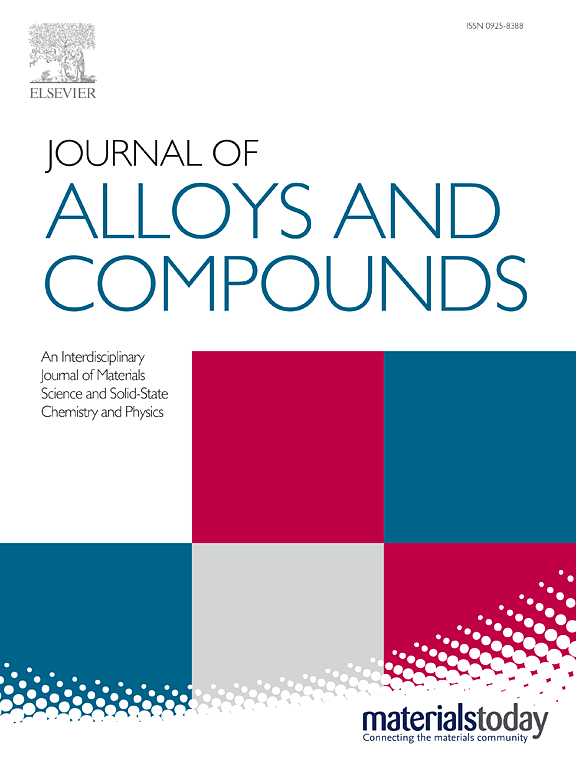Interface-engineered 2D Si-graphene oxide composite anodes for enhanced Li-ion storage performance
IF 5.8
2区 材料科学
Q2 CHEMISTRY, PHYSICAL
引用次数: 0
Abstract
Two-dimensional (2D) silicon (Si) and reduced graphene oxide (rGO)-based composites have emerged as promising anode materials for next-generation lithium-ion batteries (LIBs) due to their high specific capacity, mechanical flexibility during cycling, and cost-effective scalability. However, their practical application is still limited by challenges such as material agglomeration and weak interfacial bonding between Si and rGO. In this study, we address these limitations by engineering a 2D Si anode with an interlayer interface structure. This is achieved through the electrostatic self-assembly of siloxene and GO, followed by magnesiothermic reduction. The resulting composite features stable and efficient interfacial connections, which significantly improve both cycling stability and rate performance compared to conventional 2D Si-based anodes. The optimized anode delivers a high specific capacity of 1518 mAh g–1 with an initial Coulombic efficiency of 79.8% at 100 mA g–1, along with superior rate capability. Notably, it retains a high specific capacity of 1097 mAh g–1 at 1 A g–1, coupled with improved Coulombic efficiency. These findings offer a promising pathway for the rational design of Si-based anode materials, advancing the development of high-energy, high-power LIBs.

界面工程二维硅-石墨烯氧化物复合阳极,增强锂离子存储性能
二维(2D)硅(Si)和还原氧化石墨烯(rGO)基复合材料因其高比容量、循环过程中的机械灵活性和经济高效的可扩展性而成为下一代锂离子电池(lib)极具前景的负极材料。然而,它们的实际应用仍然受到诸如材料团聚和Si与rGO之间弱界面键合等挑战的限制。在本研究中,我们通过设计具有层间界面结构的二维硅阳极来解决这些限制。这是通过硅氧烷和氧化石墨烯的静电自组装,然后进行镁热还原来实现的。所得到的复合材料具有稳定和高效的界面连接,与传统的二维硅基阳极相比,显著提高了循环稳定性和速率性能。优化后的阳极具有1518 mAh g-1的高比容量,100 mA g-1时的初始库仑效率为79.8%,同时具有优越的倍率能力。值得注意的是,它在1 a g-1时保持1097 mAh g-1的高比容量,同时提高了库仑效率。这些发现为合理设计硅基阳极材料提供了一条有希望的途径,推动了高能、高功率锂离子电池的发展。
本文章由计算机程序翻译,如有差异,请以英文原文为准。
求助全文
约1分钟内获得全文
求助全文
来源期刊

Journal of Alloys and Compounds
工程技术-材料科学:综合
CiteScore
11.10
自引率
14.50%
发文量
5146
审稿时长
67 days
期刊介绍:
The Journal of Alloys and Compounds is intended to serve as an international medium for the publication of work on solid materials comprising compounds as well as alloys. Its great strength lies in the diversity of discipline which it encompasses, drawing together results from materials science, solid-state chemistry and physics.
 求助内容:
求助内容: 应助结果提醒方式:
应助结果提醒方式:


